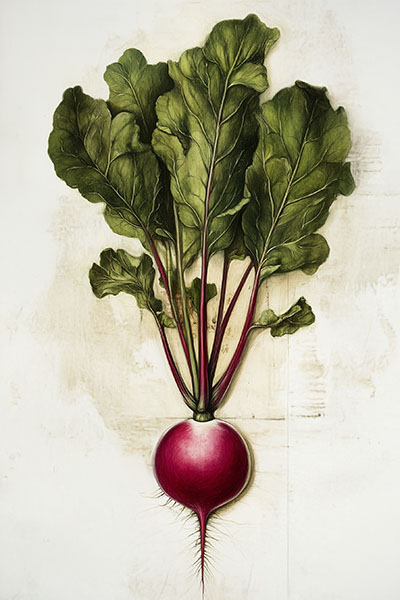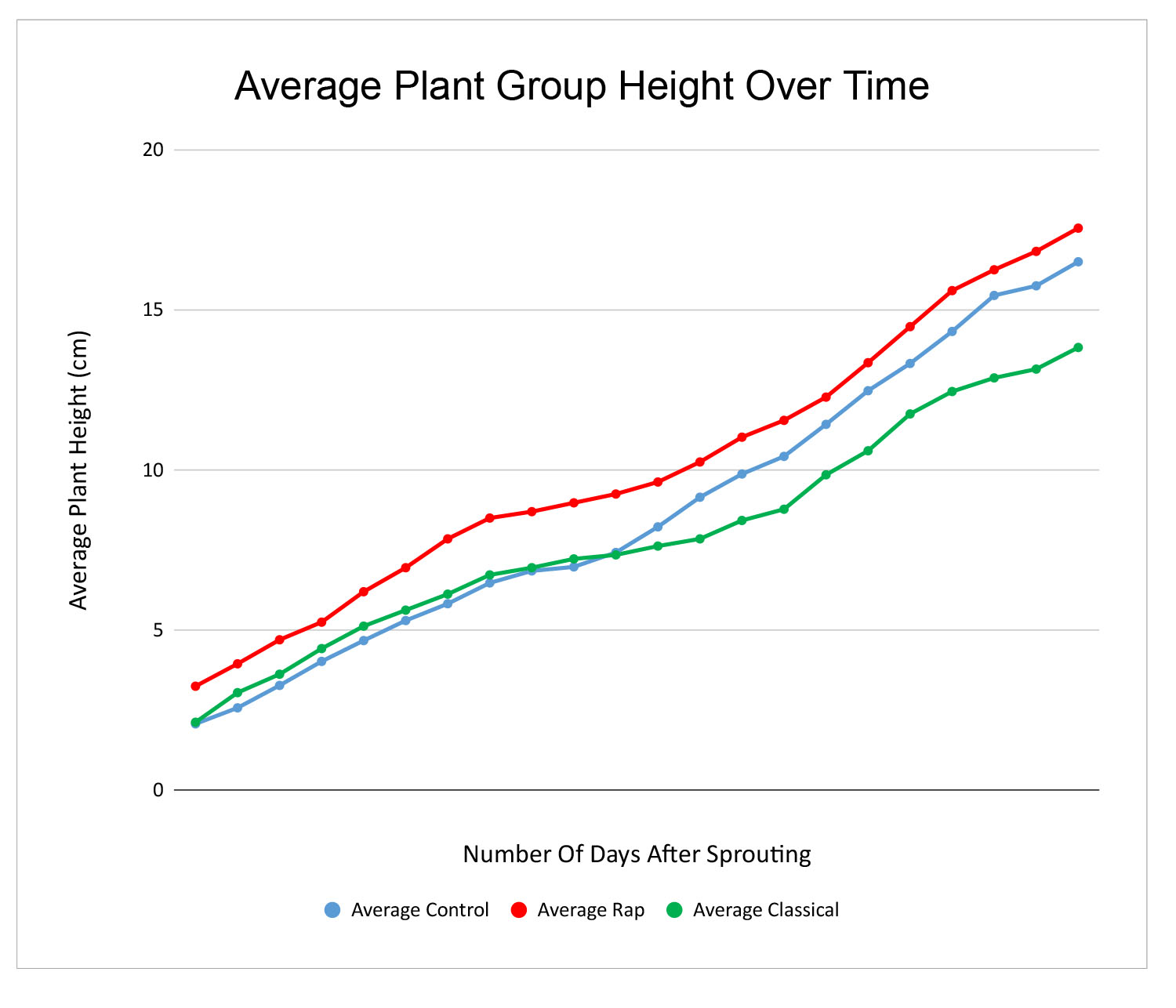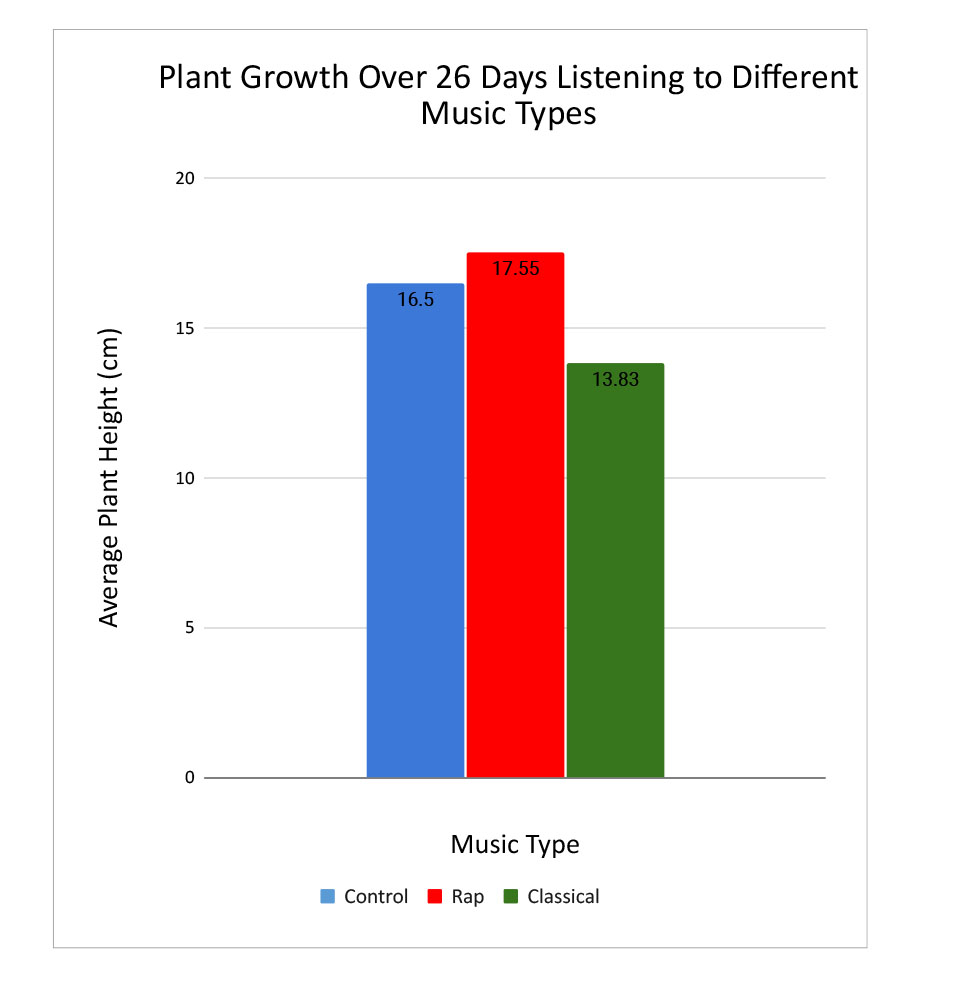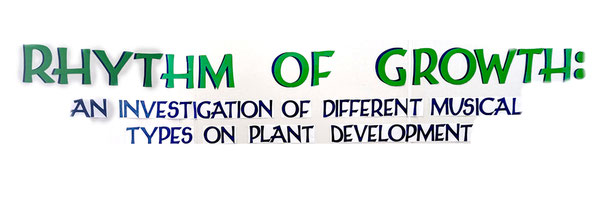Rhythm Of Growth
Grade 5
Presentation
No video provided
Hypothesis
Ashton
I believe classical music will work best because its calm and soothing qualities might help the plants grow. Additionally, I think the group with no music will do the worst because the silence might not provide any stimulation for the plants.
James
I think classical will grow the most because it will stimulate the cells of the plants and rap will be the worst because its lyrics are not soothing and I think that will be helpful if it was soothing. Also the rap might overstimulate the plants and might cause stress to the plants which might slow down the growth of the plants.
Research
How Plants Grow
Plants need sunlight, water, and nutrients to grow. Plants have to grow upwards to get sunlight and the roots need to grow downwards to get nutrients and water. If the conditions are right the plant will grow.

image generated with AI
How Music Could Affect the Plants Growth
Music has a big impact on humans and animals. Just think of how happy your favorite song makes you feel! But does music also have an effect on plants and their growth? Plants don’t have ears, so how would that even work? Scientists have been trying to figure it out with experiments since the 1960s!
Research from Singh and Retallack showed that music seemed to help plants grow stronger and healthier, but they didn’t fully understand why. Both studies suggested that vibrations from music might influence plant growth, but more research was needed to explain how it works (Singh, 1962; Retallack, 1973). Later studies found that plants don’t actually "hear" music, but they can sense the vibrations from it, which might help them take in more nutrients and grow better. However, this is just a theory because scientists aren’t completely sure how music affects plants or if it helps all the time (Hassanien et al., 2014).
Not all scientists are sure that music really helps plants grow because the evidence isn’t strong, and the results don’t always match up. Research is still ongoing in this field to find a connection between music and plant growth.
Music could affect plant growth if sound waves stimulate and activate the plant's cells. When the cells are activated by the sound, nutrients could be more likely to be transported throughout the plant’s body, helping the plant’s growth and strengthening the plant's immune system.
Testable Question
Does being exposed to music affect plants growth speed and does the type of music matter?
Variables
Independent Variable
Our independent variable was the type of music that plants were exposed to.
Group A - Control (no music)
Group B - Rap music was played each night from 8:00 p.m. to 9:00 a.m.
Group C - Classical music was played each night from 8:00 p.m. to 9:00 a.m.
Dependent Variable
Our dependent variable was how much the plants grow.
Controlled Variables
Our controlled variables are:
- The size and type of pot
- The type of dirt
- How long it was exposed to light for each day
- How long they were expose to music each day
- Temperature
- Type of plant
- The box they were in
- Same amount and time of waterering
- The plants were all measured at the same time
Procedure
- Filled 12 compostable pots with Organic potting soil.

- Labeled 4 pots for each musical condition
Group A - Control (no music)
Group B - Rap Music
Group C - Classical Music
- Made a hole in the soil and planted a radish seed 1.5 cm deep in each pot.
- Watered each pot with a ¼ cup of water. Initial watering schedule was a ¼ cup of water every 3 days. Watering schedule increased to a ¼ cup every day as plants grew.
- Placed each group of 4 plants in their separate compartments in the sound dampening grow box.

- Turned on the full spectrum LED grow light. This light was programmed to be on from 8:00 AM - 9:00 PM using the mechanical timer.

- Each MP3 player was played continuously from 9:00 PM - 8:00 AM using headphones in their assigned compartments of the sound dampening grow box.
- Measurements of plant shoots were taken daily once seedlings sprouted using a ruler from the soil base to the tip of the tallest leaf.

Observations
The rap group grew the tallest compared to the other two groups. In second came the control group, the one with no music, and finally the group that had the least growth was the classical music group. Rap was the tallest for the entire experiment; it was never behind the classical or control groups. The tallest plant from the rap group was way ahead of all the other plants for the entire time. The control and classical groups were very similar in the beginning then the classical group started to outgrow the control group slightly. The control group had the least growth until day 11 when it started growing faster than classical and took second place. Rap had the biggest leaves.
| Plant Growth Chart | ||||||||||||||||||||||
| 4-Jan-24 | 5-Jan-24 | 6-Jan-24 | 7-Jan-24 | 8-Jan-24 | 9-Jan-24 | 10-Jan-24 | 11-Jan-24 | 12-Jan-24 | 13-Jan-24 | 14-Jan-24 | 15-Jan-24 | 16-Jan-24 | 17-Jan-24 | 18-Jan-24 | 19-Jan-24 | 20-Jan-24 | 21-Jan-24 | 22-Jan-24 | 23-Jan-24 | 24-Jan-24 | 25-Jan-24 | |
| Group A Control | ||||||||||||||||||||||
| Control 1 | 2.8 | 3.2 | 4.5 | 5.3 | 6.4 | 6.7 | 7.0 | 7.4 | 7.6 | 7.6 | 7.7 | 8.0 | 9.0 | 10.0 | 10.6 | 11.9 | 12.6 | 13.4 | 14.3 | 15.5 | 15.8 | 16.2 |
| Control 2 | 3.0 | 3.5 | 4.0 | 5.5 | 6.3 | 7.0 | 7.5 | 8.0 | 8.8 | 9.0 | 9.5 | 10.5 | 12.1 | 12.9 | 13.1 | 14.0 | 15.2 | 16.1 | 17.2 | 17.4 | 17.6 | 18.0 |
| Control 3 | 1.5 | 2.1 | 2.5 | 2.7 | 3.0 | 3.5 | 4.0 | 5.0 | 5.3 | 5.3 | 5.9 | 6.9 | 7.2 | 7.4 | 7.6 | 7.8 | 8.1 | 9.2 | 10.6 | 11.6 | 12.0 | 13.2 |
| Control 4 | 1.0 | 1.5 | 2.1 | 2.6 | 3.0 | 4.0 | 4.8 | 5.5 | 5.7 | 6.0 | 6.6 | 7.5 | 8.3 | 9.2 | 10.4 | 12.0 | 14.0 | 14.6 | 15.2 | 17.3 | 17.6 | 18.6 |
| Average Control | 2.1 | 2.6 | 3.3 | 4.0 | 4.7 | 5.3 | 5.8 | 6.5 | 6.9 | 7.0 | 7.4 | 8.2 | 9.2 | 9.9 | 10.4 | 11.4 | 12.5 | 13.3 | 14.3 | 15.5 | 15.8 | 16.5 |
| Group B Rap | ||||||||||||||||||||||
| Rap 1 | 3.5 | 4.0 | 4.5 | 5.0 | 6.3 | 7.0 | 8.0 | 8.5 | 8.7 | 9.0 | 9.2 | 9.3 | 11.2 | 12.5 | 12.8 | 13.6 | 14.5 | 15.3 | 16.5 | 17.1 | 17.9 | 18.6 |
| Rap 2 | 5.0 | 5.5 | 6.3 | 7.0 | 8.4 | 9.3 | 10.0 | 11.0 | 11.6 | 12.1 | 12.4 | 12.9 | 13.1 | 14.0 | 14.8 | 15.7 | 17.1 | 18.1 | 19.5 | 19.9 | 20.1 | 20.4 |
| Rap 3 | 1.5 | 2.8 | 3.5 | 4.0 | 4.5 | 5.0 | 6.0 | 6.5 | 6.5 | 6.6 | 6.9 | 7.2 | 7.3 | 8.1 | 8.9 | 9.2 | 10.0 | 11.0 | 11.6 | 12.6 | 12.7 | 13.3 |
| Rap 4 | 3.0 | 3.5 | 4.5 | 5.0 | 5.6 | 6.5 | 7.4 | 8.0 | 8.0 | 8.2 | 8.5 | 9.1 | 9.4 | 9.5 | 9.7 | 10.6 | 11.8 | 13.5 | 14.8 | 15.4 | 16.6 | 17.9 |
| Average Rap | 3.3 | 4.0 | 4.7 | 5.3 | 6.2 | 7.0 | 7.9 | 8.5 | 8.7 | 9.0 | 9.3 | 9.6 | 10.3 | 11.0 | 11.6 | 12.3 | 13.4 | 14.5 | 15.6 | 16.3 | 16.8 | 17.6 |
| Group C Classical | ||||||||||||||||||||||
| Classical 1 | 3.0 | 4.0 | 4.5 | 6.0 | 7.0 | 7.5 | 8.0 | 8.5 | 8.8 | 9.3 | 9.4 | 9.7 | 9.8 | 10.7 | 11.0 | 12.2 | 13.1 | 14.1 | 14.5 | 15.1 | 15.4 | 15.6 |
| Classical 2 | 2.0 | 3.0 | 3.5 | 4.5 | 5.0 | 5.5 | 6.0 | 6.4 | 6.6 | 6.7 | 6.8 | 7.1 | 7.3 | 8.1 | 8.5 | 9.7 | 10.5 | 11.8 | 12.3 | 12.5 | 12.8 | 14.0 |
| Classical 3 | 0.5 | 1.2 | 1.5 | 1.7 | 2.0 | 2.5 | 3.0 | 4.0 | 4.2 | 4.4 | 4.6 | 5.0 | 5.5 | 5.7 | 6.1 | 7.3 | 8.0 | 9.3 | 10.7 | 11.3 | 11.6 | 12.4 |
| Classical 4 | 3.0 | 4.0 | 5.0 | 5.5 | 6.5 | 7.0 | 7.5 | 8.0 | 8.2 | 8.5 | 8.6 | 8.7 | 8.8 | 9.2 | 9.5 | 10.2 | 10.8 | 11.8 | 12.3 | 12.6 | 12.8 | 13.3 |
| Average Classical | 2.1 | 3.1 | 3.6 | 4.4 | 5.1 | 5.6 | 6.1 | 6.7 | 7.0 | 7.2 | 7.4 | 7.6 | 7.9 | 8.4 | 8.8 | 9.9 | 10.6 | 11.8 | 12.5 | 12.9 | 13.2 | 13.8 |
Analysis
Rap music helped the plants grow the tallest compared to the classical music group and the control group. We think rap did the best because it had a strong, steady beat that might have caused vibrations to stimulate the plant cells. On the other hand, classical music seemed to do the worst because possibly because its tempo kept changing, which might have caused fewer vibrations and less stimulation for the plants. Different types of plants might grow differently depending on the music they "like," since flowering, slow-growing, and root plants all have different needs. Radishes, being fast-growing root plants, seemed to respond well to the rap music. We were surprised by the results because we thought classical music would do the best, but it actually did the worst.



Conclusion
In this experiment, we played classical and rap music for 26 days to see how it would affect radish plant growth. In the end, the plants that listened to rap music grew the tallest, doing better than both the classical music plants and the ones with no music at all. The plants that listened to classical music grew the least. The results surprised us, as we initially expected classical music to have the greatest positive effect, but it turned out to perform the worst. One reason rap music might have helped the plants grow better is because of its strong, steady beat, which might have created vibrations that helped the plants grow. Classical music doesn’t have the same kind of steady beats, so it didn’t help the plants as much. It's also possible that different plants might react to different kinds of music in their own ways, depending on what they need to grow. This experiment shows that music with regular beats, like rap, might be good for radish plant growth.
Application
The applications for this experiment could be:
- Others could use this information to help their radishes grow.
- Farmers could use music in general to help their different types of plants grow which could increase crops and food production.
- Greenhouses could use music to make healthier plants during the winter.
Sources Of Error
The sources of error that may have occurred during this experiment are:
- The plants got dried out during the experiment one day when the lid was left on with the light which overheated the plants. They had to be watered and they did get better but it could have affected our results.
- There was probably a little bit of sound leakage between plant groups
- The volume of music played might not have been exactly the same.
- One set of headphones had to be changed during the experiment because it stopped working.
- One night one of the mp3 players stopped playing sometime during the night.
- There could be errors in measurement because it was hard to make sure the bottom of the ruler was in the right spot.
Citations
Hassanien, R., et al. (2014) Advances in effects of Sound Waves on Plants. Journal of Integrative Agriculture, 13(2), 335-348.
Retallack, D., (1973) The Sound of Music and Plants. DeVorss.
Pink, A. Fact or Myth: Does Music Affect Plant Growth? [Blog] (). Retrieved from https://bloomscape.com/green-living/does-music-affect-plant-growth/?srsltid=AfmBOoofuUvotCUeRE_Mc3C4dGtn4r3hFoP3Es40F8brIlQJOltX9-iN
Singh, T.C.N & Ponniah, S. (1962). On the effects of sound-percussions transmitted through the earth on the growth and reproductive phases of certain ornamental flowering plants. Pro. 15th Int. hort. Congr. Nice, Vol. 2, 429-39.
Acknowledgement
We thank are parents for helping us build the sound dampening plant box and for helping us edit the work.

